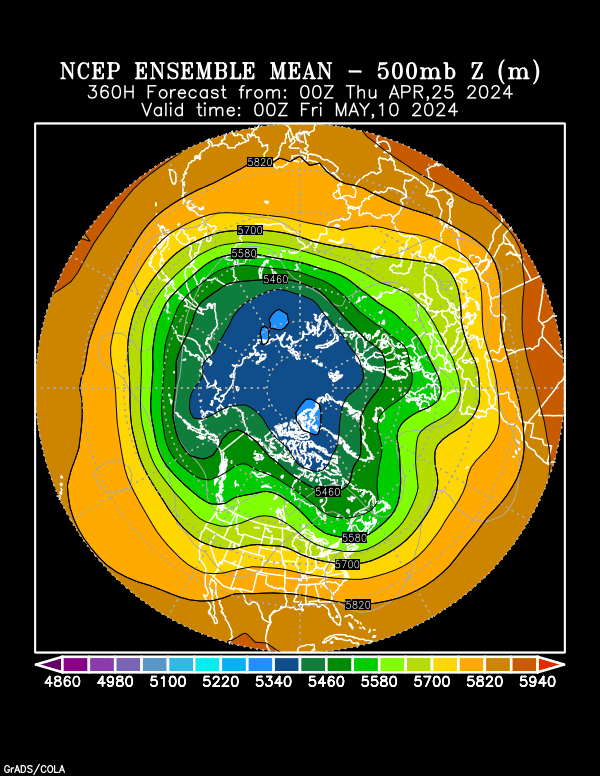EURO Day 8-10 3 day average.
The models continue to advertise arctic cold building in NW Canada but how and where does this arctic air get transported down, if at all.
First, the run shows NO ridging in Japan (or Korea). Not generally good for transporting AC into the states.
Second, the AO (The Arctic Oscillation) going very negative. Good for transporting AC down.
Third, Ridge/Trough/Ridge couplet in the Atlantic Ocean, but NOT where it's prime for a NEG NAO pattern. In fact, it's POS on this depiction. Not good for locking down cold air in the East, and NOT generally conducive for snowstorms. In fact, the EURO's depiction on this run is a blowtorch for the East/Southeast.
Is the EURO mishandling the Split flow? IMHO, yes. The Canadian/GFS/NOGAPS Ensembles don't support this strong SE ridge.
NOGAPS Ensembles Day 10.

Canadian Ensembles Day 10.

12z GFS Ensembles Day 10.

Assuming that the overall idea is correct from the EURO and the global ensembles (00z run of the GFS ensembles) advertise ... cold air is coming, just not quite as soon as originally expected.
GFS ensemble loop

 The posts in this forum are NOT official forecast and should not be used as such. They are just the opinion of the poster and may or may not be backed by sound meteorological data. They are NOT endorsed by any professional institution or
The posts in this forum are NOT official forecast and should not be used as such. They are just the opinion of the poster and may or may not be backed by sound meteorological data. They are NOT endorsed by any professional institution or 

